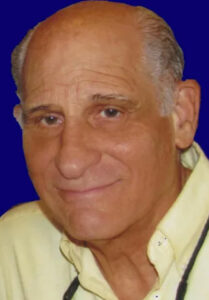By Richard Bialosky
When I was asked to write a column about Low Impact Development and sustainability I was happy to say yes.
Sustainability is the issue that drives our Mandala Village development (mandalavillage.com) in Indian River County. It’s where I spend the greatest amount of my time and focus, working to understand the dynamics and implement solutions.

As I began to write, I felt overwhelmed. The Intergovernmental Panel on Climate Change recently made the stark pronouncement that major climate catastrophes are inevitable, and the trend, irreversible. Without great courage and resolve, the solutions to the global, local, and personal environmental problems we face will be unattainable.
It is comforting to know that there are long lists of steps we can and must take to right the course. But before we can have confidence these lists are sufficient to be the solutions, we must first deal with what I see as the central roadblock.
To put it bluntly, as a society we demonstrate a total lack of the will needed to change public policy. That is, in part, because we can’t even come to an agreement that real problems are in fact real.
I can lay out a list of the challenges and a list of solutions, but I cannot get past this central dilemma: How do we motivate the larger population to take environmental challenges seriously?
Here are a few of the sustainability solutions we are incorporating into Mandala Village.
1) Landscaping will be primarily native Florida planting with some Florida-friendly and some edible additions.
A couple of years ago Dr. Richard Baker and the Pelican Island Audubon Society hosted two conferences about why native Florida planting is critically important. If you think you can sit back because you believe that sea level is not even going to rise one millimeter, you still won’t be able to escape the tears that await you when there are no song birds left to sing. The long list of bird species that have become extinct in recent years is a bitt
There is an unbreakable link that goes from native plant species, to native insects, to native birds. And if you wonder why it matters that the bird population is decreasing, just Google what happened when Mao Zedong initiated the Four Pest Campaign in 1958. Spoiler Alert: It doesn’t have a happy ending.
Along with the positive impact on our native fauna, Florida native plants reduce irrigation water use, reduce and even eliminate the need for toxic fertilizers and pesticides, and reduce nutrient-laden runoff. This is something we can require for new developments and implement in our own backyards.
2) Mandala Club will be a Net Zero Energy, or at the very least a Net Zero Ready community, emphasizing energy efficiency and rooftop photovoltaic solar panels.
The scientific consensus is that the impacts of climate change are potentially enormous and threaten our very existence. The need to eliminate fossil fuel dependency is an absolute, and renewable energy generation will ultimately need to be implemented on a global scale. I don’t know if point-of-use energy generation will be part of the long-range picture or not but, in the interim, it’s all we can do.
3) We will make electric car charging available for all Mandala Village residents.
Electric cars are the future, but there is a caveat. Car dependence negatively impacts the quality of our lives in more ways than we may be aware — traffic congestion, energy consumption, pollution, and our health.
Electric cars will help reduce energy consumption and pollution, but unfortunately, they may exacerbate traffic, they won’t reduce sprawl, and they will probably encourage the continuation of our “one person to a vehicle” reality.
4) We are creating a mixed-use community with an emphasis on walkability and wellness.
The village won’t be fully self-sufficient, but residents will be able to walk or bike to a market or a café. The side-benefit of walking is better health. Walkability is a key element of Traditional Neighborhood Development, a smart growth concept that needs to be encouraged.
5) Lastly, we do have a plan that addresses the fundamental issue I raised earlier, although I think it’s fairer to call it a hope than a plan.
If you read about the philosophical foundation of our project on the website you will see that there is something deeply holistic in our mission that goes well beyond a simple list of components. True sustainability needs to go to the core of who and what we are. My hope is that our village will be a magnet for like-minded residents who will in turn create a synergistic community that will drive our goals and vision to the next level.
The undeniable fact is we do not have time to wait for grand solutions. We already have examples of community developments that have been successful in reducing the human impact on the environment.
Small scale, yes; but if we emulate, implement and, most importantly, amplify these small changes in the way we live, in our individual behaviors, and in public policy, they will have a cumulative effect.
What other choice do we have?
Architect Richard Bialosky lives in Indian River County, where Mandala Village is planned. This column originally appeared in the Indian River Neighborhood Association newsletter and Treasure Coast newspapers, and is distributed by The Invading Sea.



